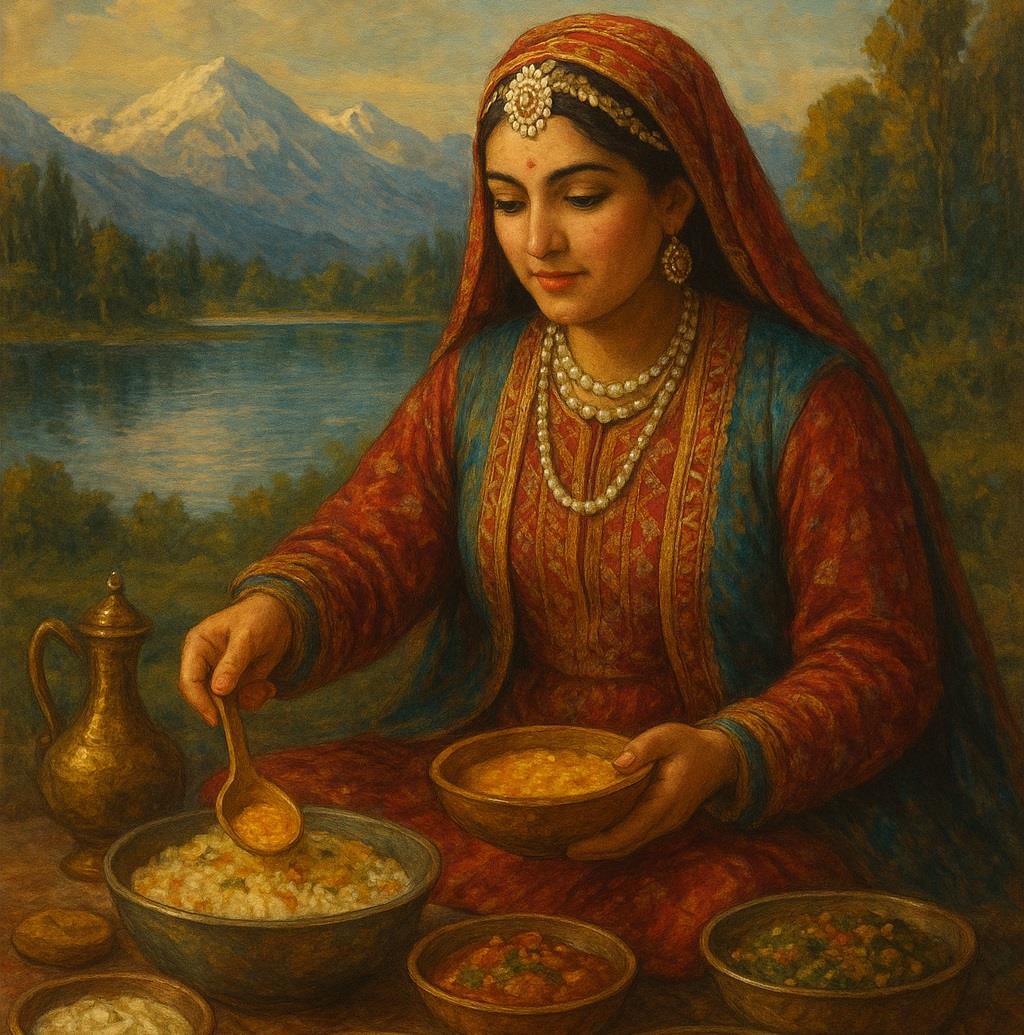
From Hearth To Heart: The Culinary Soul Of Kashmir
Representational Photo
By Dr. Ratan Bhattacharjee
The sun had only begun to touch Srinagar when I stepped into a kitchen alive with motion.
A mother fed her children as she stirred a pot of mutton curry, the aroma of yogurt, fennel, and cardamom curling in the air. Lavasa rested nearby, and each movement felt purposeful, a dance of care and tradition.
ADVERTISEMENTShe paused, looked at me, and said,“Cooking remembers for us. It keeps our history alive.”
Kashmiri food carries the valley's history in the way it simmers, folds, and blooms.
Centuries ago, the first inhabitants ate barley, rice, and wild greens. Buddhism, Hinduism, and Islam arrived and left traces in how people prepared and seasoned their food.
Traders, travellers and talisman from Central Asia and Persia brought spices, techniques, and dishes that transformed the valley's cuisine.
By the time Mughal influence reached the hills, Kashmiri cooking had become an art form, a marriage of local produce and exotic flavours, of patience and precision.
The fourteenth century brought a defining moment. King Zain- Abidin invited master cooks from Central Asia into his court. They became the first wazas. They taught slow cooking, layering of spices, and the careful art of balancing flavour and fragrance.
These techniques became Kashmiri over the years, adapted to local ingredients and sensibilities. The wazwan, the ceremonial multi-course feast, remains the living legacy.
I attended a wedding in Srinagar once, tucked in a narrow alley behind Lal Chowk. The vast hall smelled of meat delicacies and simmering gravies. The head chef oversaw a team of wazas, each dish arriving in careful sequence. Four guests shared a trami, a large copper platter. Each bite unfolded centuries of migration, adaptation, and memory.
Eating the wazwan is both a lesson in taste and a lesson in history.
The daily food mirrors the valley's seasons. Winters are long and harsh. Families rely on preserved vegetables, dried fish, and sun-dried greens stored in earthen jars.
Harissa, slow-cooked through the night, warms hands and hearts in snowbound mornings. Summer brings freshness: lotus stems, collard greens, and leafy vegetables dominate kitchens.
Nadru yakhni, lotus stems in yogurt gravy, and haak, greens cooked in mustard oil and asafoetida, carry the valley's agrarian pulse and a sense of balance. Rice is the heartbeat of every meal.
Vegetarian dishes carry the same care as meat. They reflect philosophy as well as taste. Dum aloo and chok wangun highlight harmony. Spices are bold but measured, each serving a purpose.
Shaivite and Sufi teachings echo in the way dishes are prepared. Shaivite principles encouraged restraint, Sufi teachings emphasized moderation.
Kashmiri Pandit cooking avoids onion and garlic, favours asafoetida, yogurt, fennel, and ginger. Rogan josh glows from ratanjot rather than chili.
Muslim cuisine absorbs Persian and Mughal influence, emphasizing rich gravies and ceremonial meals.
But both reflect restraint, patience, and devotion to flavour.
Bread and tea structure daily life. Early mornings at the kaandur, the local bakery, bring lavasa and girda into homes. Adults carry sesame-studded chochwor in the afternoon. Noon chai, the pink salted tea, begins the day. Kahwa, fragrant with saffron and almonds, ends it.
These rituals anchor families and link generations.
Saffron from Pampore colours and perfumes meals. Kashmiri chilies provide hue without overwhelming heat. Slow cooking allows flavours to bloom naturally. Rice is washed three times, gravies stirred with care, copper vessels chosen for even heat. Recipes pass down orally, measured by touch and taste rather than writing.
Kitchens preserve Kashmiri culture. Cooking is an act of care, memory, and continuity. Every dish, from the ordinary to the ceremonial, carries centuries of heritage.

Legal Disclaimer:
MENAFN provides the
information “as is” without warranty of any kind. We do not accept
any responsibility or liability for the accuracy, content, images,
videos, licenses, completeness, legality, or reliability of the information
contained in this article. If you have any complaints or copyright
issues related to this article, kindly contact the provider above.

















Comments
No comment